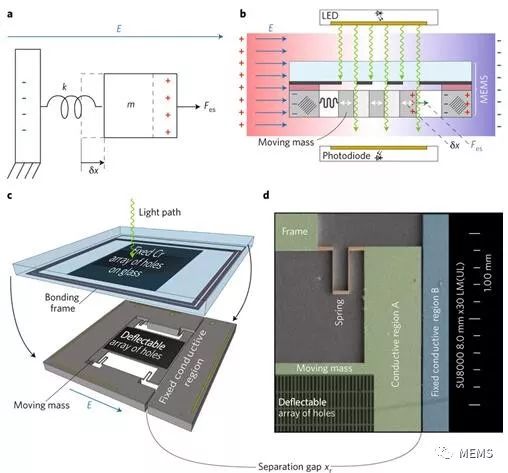
Privacy statement: Your privacy is very important to Us. Our company promises not to disclose your personal information to any external company with out your explicit permission.
Accurate measurement of the electric field is important for many applications, such as weather forecasting, process control of industrial equipment, or safety issues for high voltage cable workers. However, from a technical point of view, accurate electric field measurements are not easy. According to a report by Mammus Consulting, a research team from the Technical University of Vienna (TU Wien) has developed a silicon-based MEMS electric field measurement sensor by breaking through the design principles used in other current measurement equipment. In collaboration with the Institute of Integrated Sensor Systems at Danube University Krems, the main design advantage of this sensor is that it does not interfere with the electric field being measured. The research was published in the recently published Nature Electronics magazine.
Measuring principle of MEMS electric field sensors "The devices currently used to measure electric field strength have some significant drawbacks," explains Andreas Kainz of the TU Wien Sensor and Actuator Systems Institute. "These devices all contain live parts. Conductive metal components can significantly affect the electric field being measured; if the device needs to be grounded to provide a measurement reference, then this effect is further amplified." Therefore, such electric field measurement devices tend to be relatively inefficient and difficult to transport. The MEMS sensor developed by TU Wien is made of silicon and is based on a very simple principle: a miniature spring and a micromesh-like silicon structure attached to the spring for measuring micron-scale movement. When the silicon structure is in an electric field, a certain force is generated on the silicon crystal, causing the spring to slightly expand or compress.

a. The measurement principle of this MEMS electric field sensor: a mass (m) is suspended on an elastic element (rigid k), and the elastic element is fixed on a conductive fixed frame. When placed in the electric field (E), electrostatic induction produces a force (F es ) on the mass. The mass will produce a certain displacement (δx) under this force, and then use the optical principle to measure the displacement; b. The cross-sectional view of the device shows the light emitted by the LED, which can pass through the grid-like silicon structure and the hole The gap between the two is projected onto the photodiode below, and the movement of the mass changes the gap between the opaque region and the hole, thereby changing the amount of light that the LED emits light to reach the photodetector; c. This MEMS electric field 3D view of the sensor; d. How to measure the subtle displacement of the SEM field of the MEMS electric field sensor, the researchers designed an optical solution: a layer of mesh above the movable mesh silicon structure The structure, the upper and lower layers of the mesh structure of the holes are precisely arranged, the upper layer of the opening and the lower layer of the opaque area are precisely aligned, that is to say, when the lower layer of the silicon structure is not displaced, the LED light is unable to penetrate Two layers of silicon structure. When the sensor is placed in an electric field, the underlying networked silicon structure is displaced by the electrostatic force, so that there is a gap between the upper and lower layers of the network structure, and the LED light can pass through the gap to reach the photodetection below. On the device. By measuring the amount of light entering, the intensity of this electric field can be calculated using a suitable calibration device.
The accuracy of the prototype device is exciting. This MEMS electric field sensor cannot measure the direction of the electric field, but it can accurately measure the intensity of the electric field. It can measure the electric field strength from low frequency up to 1KHz. “Using our prototype sensors, we can measure weak electric fields of less than 200 volts/meter with high reliability,” says Andreas Kainz. “This means that our system is already comparable to the performance of existing products, and our sensors are smaller, It's even simpler. In addition, this MEMS sensor has a lot of room for improvement. Other measurement methods are already mature solutions, and our MEMS electric field sensor has just been designed and shaped. In the future, it will definitely improve.
February 13, 2023
February 10, 2023
この仕入先にメール
February 13, 2023
February 10, 2023

Privacy statement: Your privacy is very important to Us. Our company promises not to disclose your personal information to any external company with out your explicit permission.

Fill in more information so that we can get in touch with you faster
Privacy statement: Your privacy is very important to Us. Our company promises not to disclose your personal information to any external company with out your explicit permission.